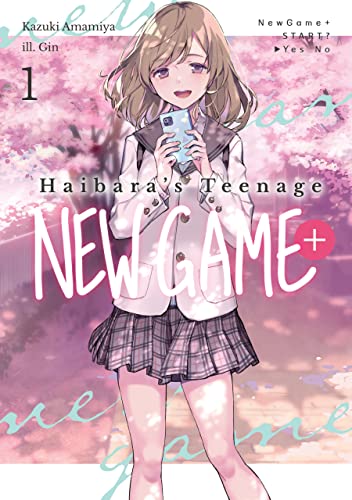By Kazuki Amamiya and Gin. Released in Japan as “Haibara-kun no Tsuyokute Seishun New Game” by HJ Bunko. Released in North America by J-Novel Club. Translated by Esther Sun.
There *is* a serious element to this series, and it’s 100% down to “every girl is falling in love with Haibara, and he has to make some of them sad”. He’s not at a point where he can do that yet. That will likely lead to bad things down the road. Still, that’s the only REALLY serious part of the series. It’s not the sort of book that, having given Haibara a chance to redo his crappy high school and college years, is going to turn into a “no, you screwed up again, try a third time” sort of series. That said, I must admit that I was sort of on tenterhooks midway through the book. These are still high school kids, and when there’s a very strict controlling parent and a runaway kid who stays over at the house of a boy she’s clearly falling in love with, well, things could have gone very bad. As in “I will notify your parents and the school” bad. But this is not that sort of series.
It’s summer, and everyone has passed their exams, albeit by the skin of their teeth for some. This means it’s time for a summer activity. Let’s hit the beach! Everyone agrees, and they rent a nice cabin with rooms for everyone. The only issue is Hoshimiya. We’ve heard before how strict her family is, and trying to get around it by pretending there aren’t any guys going on the trip is the sort of lie that’s easily discovered. So she’s not going. Fortunately, she and Haibara manage to bond anyway, as he runs into her at a cafe, where he discovers her big, big secret – she’s a novelist! He agreed to pre-read her book, whose main characters seem somewhat familiar. Unfortunately, daddy dearest discovers this, and announces that a) she can’t be an author, and b) she has to distance herself from her friends. This goes badly.
Hoshimiya is still very much “in the lead” in this harem series, and this book gives us a much needed focus on her and her family, and shows that she and Haibara are a lot more alike than he may have realized. In fact, my favorite part may have been when she admitted that she didn’t really like him much at first because of all the fronts he was putting up. That said, of course, by the end of this book she’s totally smitten, and although you would think this would be good news for Haibara – she’s the one he likes, after all – he still can’t quite reject Uta yet. And that’s not even getting into his childhood friend, who he’s 100% oblivious to. She, at least, seems to have made her own decision, even if it hurts her, and I hope things go better for her with someone else, though I doubt it will.
All this plus a new girl, who comes on like a relatively blasé storm, and who will no doubt feature heavily in the next book. If you like good old-fashioned “who will win” romcoms, this is for you, though be prepared for your favorite to lose. That always happens in old-fashioned romcoms.



